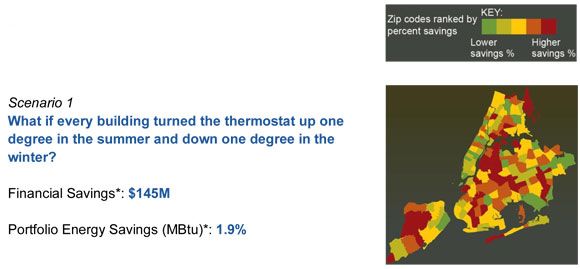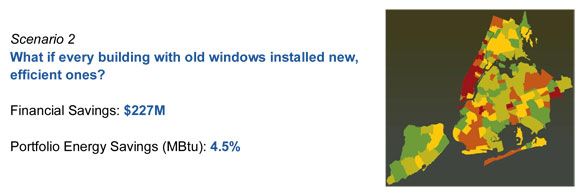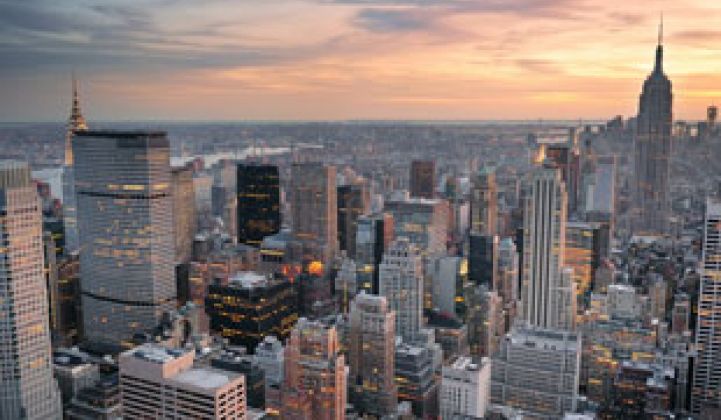If more than 30,000 commercial buildings in New York City adjusted their thermostats just one degree upward in summer and one degree lower in winter, the savings would add up to $145 million dollars annually.
That finding is just one of the insights gleaned from Retroficiency’s new Building Genome project, which leverages publicly available data to take a high-level look at what is possible over very large portfolios -- including the entire building stock of New York City, which was the first target for the project.

“Even with just publicly available data, there’s a level of insight we believe you can get to,” said Mike Kaplan, vice president of marketing at Retroficiency.
When it comes to energy efficiency, scale and speed are the factors on everyone’s mind. Even though there are various firms offering software-based approaches to identify savings and retrofit opportunities, scale continues to be a problem. The Building Genome project, which will soon be expanded to other cities, is meant to provide policymakers, utilities and large ESCOs with a snapshot of what is possible using the startup’s analytics.
Retroficiency started with tax assessor and consumption data, Energy Star scores and energy-use intensity scores that are publicly available thanks to New York City’s energy benchmarking disclosure rules. The genome takes specific “markers” such as lighting, HVAC and envelope characteristics of buildings.
For New York, the analysis included oil boilers, which must phase out dirty No. 6 heating oil by next year.
The data is then aligned and processed using Retroficiency’s energy modeling software that includes information from past audits of similar buildings and weather data to model energy savings under different scenarios.
The project is not meant to inform one-off undertakings, but rather to “show opportunities on a mass scale,” said Bennett Fisher, CEO and co-founder of Retroficiency. Although the software-driven approach is gaining traction, “it’s still cutting-edge and disruptive for policymakers and utilities,” he said.
The project is both a thought experiment and a sales tool. Retroficiency is taking suggestions about which cities to tackle next, although cities that already have public disclosure rules are obvious choices. Bennett said the company is planning on mapping several more cities this year.
Once the mapping is done, clients can examine specific scenarios, such as where to target window retrofits. Retroficiency found that in New York City, the top 35 ZIP codes by savings potential could save triple the energy when compared to the ZIP codes with the lowest savings potential.

Most of the ZIP codes with the highest savings potential stemming from window retrofits are located in Manhattan, where glass-sided skyscrapers abound. The information is just a starting point, and the next step would be for customers to then add in their own data to yield more specific insights.
“You start by including every building in the portfolio and then dealing with the pain points for different situations,” said Fisher.
Earlier this year, Retroficiency partnered with a company that focuses on multifamily energy efficiency programs and recently announced it is working with Consolidated Edison in New York City. Utilities are a particular focus for Retroficiency and competitors like FirstFuel, because utilities are looking for low-cost ways to identify efficiency opportunities and verify savings now that some of the lowest-hanging fruit for retrofits has already been plucked.



